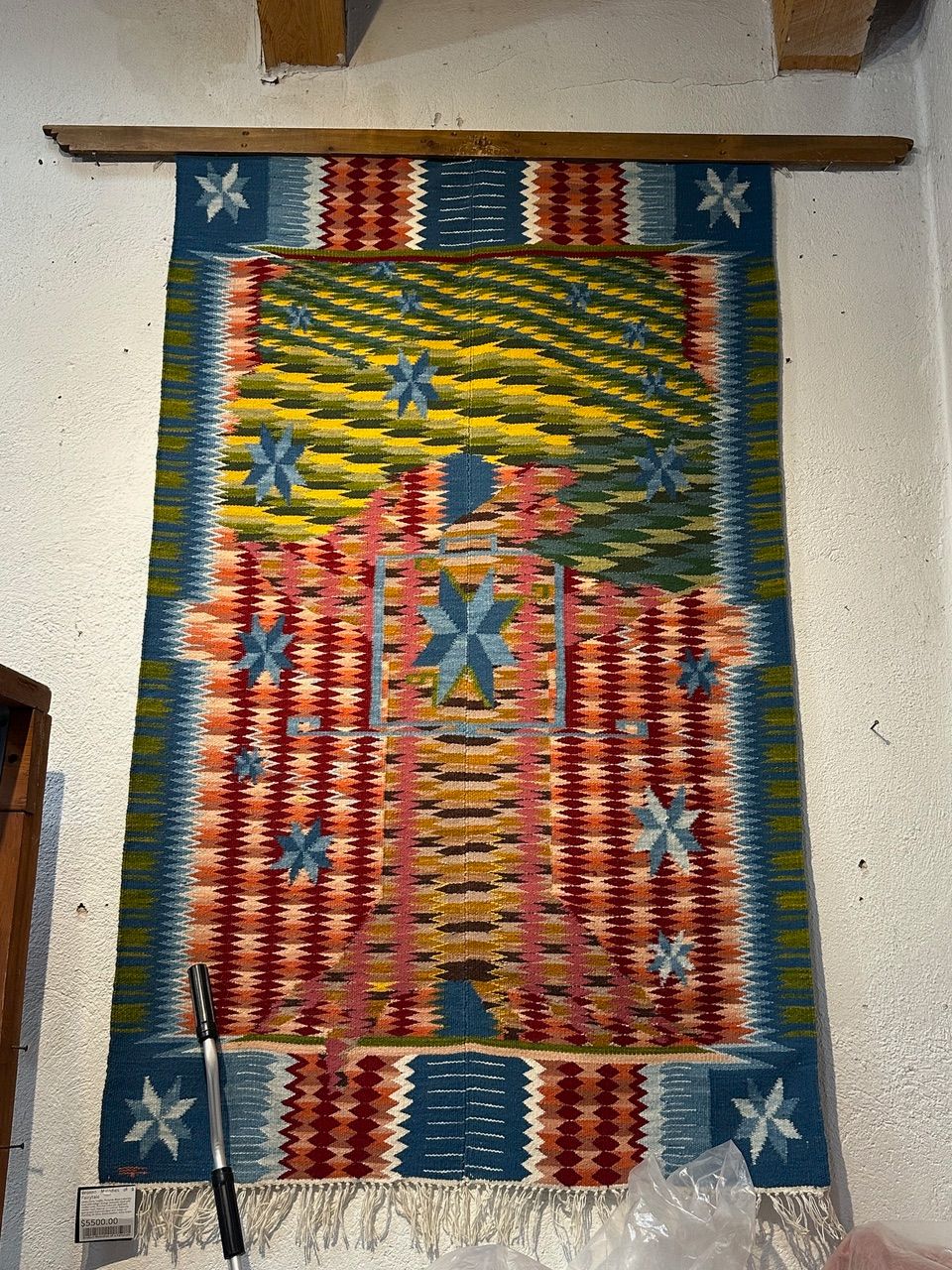In Search of Forgotten Colors
-
A video I made about making paint (and ink) from botanical dyes. We have a lot of rabbit brush (chamisa) for a good yellow in the area, but you can also use marigolds and common tansy. Best if watched directly on YouTube.
Link to video -
-
We have these same traditions here. The Spanish weavers of Chimayo, and native weavers (Dine) have used natural dyes. These days they are much more expensive than chemical dyes, and often less vibrant.
Here is a weaving by Emily Trujillo from Chimayo that uses indigo for the blues, madder root for the peachy color, and chamisa and indigo for the greens.

@Piano-Dad said in In Search of Forgotten Colors:
These days they are much more expensive than chemical dyes, and often less vibrant.
Beautiful rug! I have a natural dye, hand woven rug from Oaxaca that the woman who taught me to spin/weave/dye sold to me. "...often less vibrant" is an aesthetic sought after by some, especially in textiles.
-
A video I made about making paint (and ink) from botanical dyes. We have a lot of rabbit brush (chamisa) for a good yellow in the area, but you can also use marigolds and common tansy. Best if watched directly on YouTube.
Link to video@Jodi Wow! Fascinating video, you explain the process so clearly. It is a more complicated process than what is typical for dyeing fibers. There are many natural dyes that are not light fast on fiber either. Beet root, for example. Luckily, several are quite light fast if proper mordanting is applied.
My neighbor told me about a patch of Tansy in the clearing in the woods above my house. I'm meaning to go get some for experimenting with.
-
It makes a really nice color - the Tansy - but I have not put it in the window yet to see how quickly it fades. The best natural substances for longer lasting color are usually the ones used historically by native peoples. Like Cochineal, Indigo and Rabbit brush. (All botanical dyes fade, none are 100% lightfast, some just fade more slowly than others). Lightfastness isn’t quite as big an issue on textiles (that you wear) as it is in artwork. I read somewhere that though turmeric is considered a fugitive dye (fades really quickly) people still use it and just re-dye the piece when it has faded.
-
Any light can cause fading of both natural and man-made pigments, albeit much faster on natural pigment. (I have wallpaper, recently made, that comes with a warning about fading.) But keeping it out of direct sun light will help prolong the richness of color. Some dyes will retain some color a long time if kept in minimal light conditions. Here's a fascinating example:
If the weaving is wool--a protein fiber--it will not fade as fast as cotton or linen or other cellulose fiber.
-
Let me qualify what I hastily wrote above...
If the weaving is wool--a protein fiber--it will not fade as fast as cotton or linen or other cellulose fiber.
I was referring to natural dyes; I don't know about synthetic dyes. Also, I'm basing this on the fact that protein fibers take natural dyes more readily than cellulose fibers. It could be that my conclusion about light fastness is too broad and that some natural dyes are more lightfast on protein than cellulose and vice versa.
-
Some interesting reading here, which I will read in its entirety later ...
https://www.researchgate.net/publication/273606710_The_rate_of_fading_of_natural_dyes
